Kopp Lighting protection
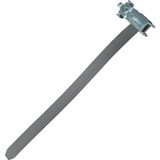

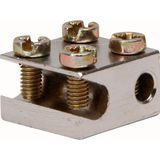

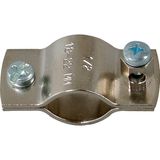

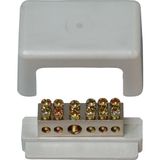


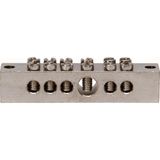
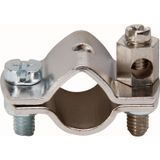
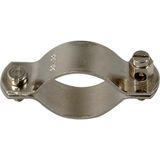

The Kopp lighting protection portfolio is designed to shield buildings and installations from the destructive effects of lightning and overvoltage events. Whether you need primary defence at service entrances, or secondary protection in sensitive control panels, Kopp offers a comprehensive line of products: from surge protection devices, lightning arresters, over-voltage protection modules, SPD units, through to grounding and earthing systems and transient voltage protectors.
Complete Range of Kopp Surge & Lightning Protection Devices
The range of Kopp surge protection devices (SPDs) and lightning arresters is engineered for modern installations where sensitive electronics, automation equipment and building networks must be protected. Key categories include:
- Kopp lightning arresters – devices that intercept direct or induced lightning strikes and route high current to ground.
- Kopp overvoltage protection modules – designed to cuff the voltage spikes that travel through the power network or via external conductors.
- Kopp SPD units – modular devices for DIN-rail or panel installation, protecting branch circuits and loads.
- Kopp grounding and earthing systems – the critical return path for lightning currents and surges to safely dissipate into earth.
- Kopp transient voltage protectors – devices targeting very fast, short duration voltage spikes often caused by switching or external induction.
By combining these layers, Kopp enables a “multi-stage defence” strategy — typical best practice in surge protection design. For example: Type 1 SPD at service entrance, Type 2 at sub-distribution, Type 3 at sensitive load.
Kopp Lightning Arresters & Overvoltage Modules
Kopp lightning arresters are designed to handle extremely high current and steep wave‐fronts from lightning strikes or the induced surge effect. Typically placed at the building entrance or on down-conductors, they form the first line of defence.
Behind them, Kopp overvoltage protection modules take on residual energy, limiting the voltage that reaches internal circuits and protecting equipment from insulation breakdown or failure.
Some technical insights:
- A lightning arrester must safely divert tens of kiloamperes (kA) to earth.
- The subsequent SPD or module must limit the voltage across downstream equipment to a safe value (see “Up” in IEC 61643-11)
- Coordination of elements is essential: e.g., the grounding system must handle the diverted current with minimal impedance to avoid “ground potential rise” and so that the equipment earthing remains safe.
- Device placement: At service entrance (external risk) → main board → sub-boards → local equipment. Each stage reduces residual risk.
For Kopp’s lighting protection line, selecting the right module involves assessing site risk (lightning-density, building height, surrounding topology), required residual voltage, and earthing system impedance.
Kopp SPD Units and Transient Voltage Protectors
Once the primary strike or surge energy has been managed, the secondary protection layer comes in: Kopp SPD units and transient voltage protectors. These are installed near equipment and control cabinets to clamp remaining surges and protect connected loads.
Operational points:
- SPDs are installed in parallel with the load, so when a surge occurs, the SPD conducts it to earth or neutral, protecting the load.
- Choose SPDs with appropriate rating for nominal discharge current (In), maximum discharge current (Imax) and residual voltage (Up).
- Transient voltage protectors handle very fast spikes, often caused by switching, harmonics or electromagnetic induction—not just direct lightning.
With Kopp’s solution you can choose DIN-rail mounted modules, replaceable cartridges, remote signalling and coordination features. Ensuring correct installation (short connection lengths to ground, correct earthing clamp) is as important as device specification.
Kopp Grounding and Earthing Systems
Grounding and earthing systems are just as critical as the protective devices themselves. You may have the best SPD or arrester, but if your grounding conductor is high-impedance, or has poor connections, the protection will under-perform. Kopp’s grounding & earthing accessories support proper equipotential bonding, earthing bars, connectors, and ensure low impedance paths to earth.
Key facts:
- Effective grounding keeps all conductive parts at the same potential, avoiding dangerous potential differences during a lightning event.
- Grounding systems must be designed in conjunction with surge protection: “The Partnership Between Grounding System and Surge Arresters” explains how they must work together.
- Periodic inspection of the earthing system (resistance measurement, visual checks) is vital for continued performance.
For Kopp lighting protection projects, the specification must include earthing resistance, conductor size, bonding to structural steel, and connection to the protective devices.
Why Choose Kopp Lighting Protection Solutions
- German-engineered quality with full range of lighting protection devices, SPDs and earthing accessories.
- Integrated system approach: you get lightning arresters, overvoltage modules, SPDs and earthing support from the same brand – simplifies compatibility and documentation.
- Suitable for residential, commercial and industrial installations where surge risk is high (e.g., tall buildings, remote sites, outdoor infrastructure).
- Supplies ready for B2B wholesale, with full technical documentation, standards compliance (IEC 61643-11, IEC 62305 etc.) and coordinated logistics.
Wholesale Supply and Distribution
Bank of Lamps offers the full Kopp lighting protection portfolio: lightning arresters, surge protection devices, overvoltage protection modules, grounding and earthing systems, transient voltage protectors. Our stock is in the EU, enabling efficient shipping to Germany, Netherlands, France, Spain, Baltics and UK. Wholesale orders benefit from consolidated packaging, project-ready documentation, and flexible minimum order volume.